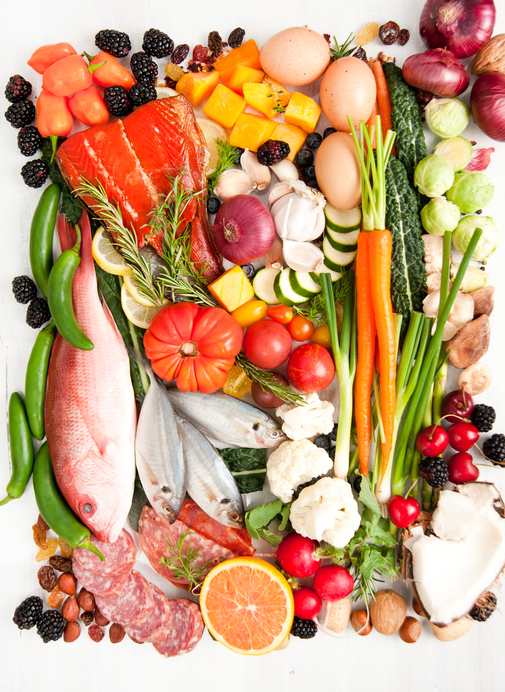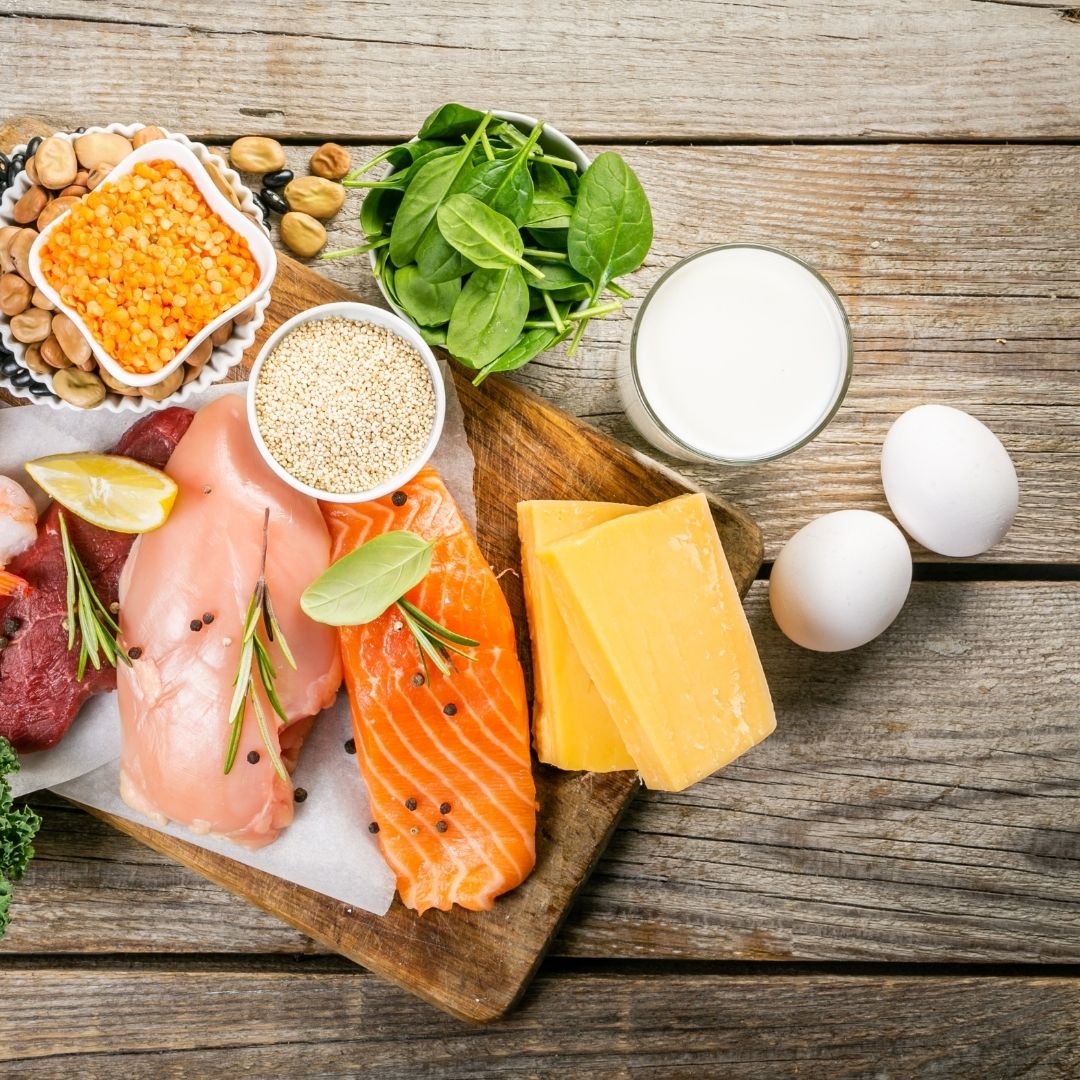Mindd Diet Protocols
Processed foods, pesticides, medications, and toxins damage the gut microbiome which in turn drives a range of digestive, autoimmune and neurological illness. Various “Healing diets” work to heal the gut and calm the immune system and vary depending on the gut, genetics and environment.
The growing “special diet” section in your local book shop is reassurance that you are a part of large and growing group of people whose digestive tracts are demanding that we reconsider our modern diet, medications, environmental toxins and stress levels. By offering a great selection of cook books, we endeavor to give families an idea of how fun and easy “special diets” can be.
Many dietary principles that help children with ADHD, asthma, allergies and autism also help individuals suffering from SIBO, Coeliac, Colitis, Crohn’s, Irritable Bowel Syndrome, anxiety and depression.
Individuals dealing with metabolic and digestive disorders require special diets to avoid foods that trigger allergies or harm the digestive tract. There are a number of “elimination” diets that can help in this way. While elimination is sometimes necessary, in many instances certain foods can be reintroduced once the gastrointestinal tract has had time to heal.
In general, we recommend an organic, fresh, wholefood diet with no/minimal refined flours and sugars and no processed foods, artificial additives, colourings or preservatives. And plenty of filtered water containing minerals is essential.
Following here is an important dietary protocol, The Weston A. Price Diet, developed by Dr Weston A. Price…
The Weston A. Price Diet
Who was Dr Weston A. Price?
In the 1930’s an American dentist by the name of Weston A. Price began to notice that compared to the beginning of his dental career he was seeing significantly more tooth decay and dental deformities. The obvious decline in overall dental health in the US had happened so quickly that Dr Price figured there must be a reason.
Many isolated groups of people still existed in the 1930’s
Dr Price happened to live at a convenient time in world history. World travel had become relatively quick and easy, and at that time there were still many isolated people groups living their traditional lifestyles. These people had not been exposed to the outside influences of modern convenience food, like Dr Price’s patients had.
He travelled to remote Swiss villages, visited African tribes, North and South American natives, Australian Aborigines, South Pacific Islanders and Gaelic peoples. In every single one of these vastly different and isolated people groups around the globe, Dr Price found a couple common characteristics. All of the people he visited had straight healthy teeth, free from decay. They had beautiful strong bodies, and were relatively free from disease.
Different, yet the same!
 Weston A. Price Diet Parameters
Weston A. Price Diet Parameters
Dr Price found that all the people groups he studied had diets rich in nutrient dense foods. These foods always consisted of cholesterol-rich animal products, including bones and organ meats. Their diets were high in saturated fat and they freely consumed and often worshipped the fat of the animal. Dr Price discovered that these animal products were rich in the fat-soluble vitamins A and D, which he found allowed their bodies to absorb minerals. He also discovered another fat-soluble nutrient which he labelled Activator X—now believed to be Vitamin K2. All the people groups he studied had a source of Activator X in their diets.
Take care—grains, seeds, nuts & legumes are special!
Many of these people groups also ate a lot of grains, seeds, nuts and legumes—only eating fruits and vegetables when they grew in season. Dr Price noticed that all of these grains, seeds, nuts and legumes were prepared with special care, soaked for days in salt and water or left to sprout before they were consumed. Some of the grains were fermented or naturally leavened into bread—a slow process, that can take days.
Dr Price found that these special preparations neutralized the anti-nutrients, tannins, phytic acid and enzyme inhibitors. All of these things are known for making grains, seeds, nuts and legumes hard to digest and inhibit the body from absorbing their nutrients.
All the people groups studied also had a source of probiotic lacto-fermented foods in the form of fruits, vegetables, dairy or meat.
Dr Price’s Diet Recommendations
- Eat a diet rich in animal products—including organs and bones—with a total saturated fat content of 30 to 80 percent. The diet allows for only 4 percent of fat to come from polyunsaturated oils that naturally occur in grains, seeds, nuts, legumes and vegetables.
- Consume at least some animal products in their raw state, including meat, eggs and fish
- Only consume raw, unpasteurized dairy products
- Eat probiotic foods with every meal, such as lacto-fermented fruits and vegetables or cultured dairy products.
Many cultures also consumed fermented beverages like kombucha, water kefir and unpasteurized wine or hard ciders. - Properly prepare all grains, nuts, seeds and legumes. This includes sprouting or soaking in an acidic medium such as whey, apple cider vinegar or lemon juice. Flours can be soaked in buttermilk or yogurt before baking; otherwise, they can be naturally leavened using traditional sourdough baking techniques.
- Take fermented cod liver oil, as it provides the necessary amounts of Vitamins A and D that the body needs.
- Eat organic pasture-raised meats, fruits, vegetables and dairy. Fruits and vegetables need only be consumed in season. Vegetables should mostly be cooked, and consumed raw in moderate amounts.
- Make all condiments, dressings and sauces from fresh ingredients.
- Only consume sweeteners—moderately—in their natural form, such as honey, maple syrup, date sugar, Rapadura (unprocessed sugar) or Stevia.
Avoid these foods and environmental factors
- All hydrogenated or partially hydrogenated oils and prepackaged or canned goods
- Yeast, refined sugar and pasteurized dairy products
- Pesticides, chemicals, and synthetic vitamins
- Fluorinated water
- Improperly prepared seeds, grains, nuts and legumes
- Products that have been bleached or “enriched”
- Avoid cooking food in aluminum or microwave ovens
Would the Weston A. Price Diet be the right choice for you?
The Weston A. Price diet is a diet that benefits everyone who is not eating the traditionally prepared foods of their ancestors. The WAP diet should be considered and begun in either of these two scenarios:
- Begin the diet as a transition out of eating a modern diet full of improperly prepared foods, hydrogenated oils and chemicals. Once the transition is complete a gut healing protocol, such as GAPS, is recommended to heal the body and intestines from years of abuse and ingestion of toxins. Starting with WAP first will help ease your body into healing.
- If you have already gone through a healing protocol like GAPS, then you should proceed to transition onto the WAP diet.
Note: you should always complete the GAPS diet under the guidance of a certified practitioner. Attempting to complete it on your own is dangerous, and can yield poor results.
Implementation of the WAP
Beginning the WAP diet can be an adjustment, and may call for some lifestyle changes. It can be very discouraging to implement a complete overhaul on your diet and routine; but once your lifestyle and schedule has adapted to the change, it really doesn’t take a lot of time—just a little planning.
Useful Tips for The Western Price Diet
- Ease into it. Begin by ridding the house of junk food and vegetable oils. Replace them with good saturated fats, such as: butter, lard, tallow, and olive oil.
- Make a meal plan. A well-rounded meal includes: meat, some properly prepared grains or legumes, some vegetables cooked in saturated fat as some probiotic food or beverage. You just have to make sure you start your grains soaking or sprouting a day or two before.
- Soak and cook all the grains and legumes you’ll need for the week at once. Then reheat them and add them to your meals throughout the week.
- Make chicken, beef, or lamb stock once a week and use it to make soups, stews and sauces or to cook rice. If you always have it on hand, then there will be no need to use bullion or canned stock. Alternately it freezes well in ice cube trays, and can then be stored in an airtight container in the freezer, to be pulled out and used as needed.
- Make sourdough bread once a week.
- Have filling snacks on hand, such as: hardboiled eggs, raw cheese, bread and butter, dried fruit, vegetables, properly prepared nuts and seeds.
What does a WAP meal plan look like?
| Sunday | Monday | Tuesday | Wednesday | Thursday | Friday | Saturday | |
| Breakfast | Eggs and Bacon, topped with Sauerkraut | Sourdough bagel with cultured butter or cream cheese | Soaked oatmeal topped with lacto fermented bananas | Eggs, salmon caviar and crème fraiche | Yogurt topped with homemade granola | Sourdough pancakes, with a lacto fermented fruit chutney | Sourdough cereal with raw milk and water kefir |
Lunch | Sourdough crackers, liver pate and sauerkraut | Sandwich made with sourdough bread and homemade chicken salad | Supper leftovers from the night before | Salad of greens, topped with meat, eggs and cheese and a lacto fermented dressing | Supper leftovers from the night before | Quesadilla made with raw cheese and sprouted grain tortillas, dipped in sour cream | Sourdough bread, butter and cheese with lacto fermented carrots |
| Supper | Chicken and soaked rice with steamed veggies. Eaten with sour cream | Lamb or beef stew, topped with Sauerkraut or crème fraiche | Slow cooker pot roast with potatoes and a green salad with yogurt dressing | Pork green chili topped with sour cream and raw cheese | Slow cooked pork roast with braised cabbage and apples | Pizza sausage and sauerkraut pizza made of a sourdough pizza crust and unpasteurized beer or cider | A salmon and potato hash topped with eggs and sour cream |
What are the major differences between the GAPS, WAP & Paleo diets?
| WAP Diet | GAPS Diet | Paleo Diet |
| • Allowed to eat all meats, fruits, vegetables, grains, nuts, seeds and legumes as long as they are properly prepared.
• Focuses on eating a diet high in saturated fat and cholesterol. • Raw dairy is permitted and encouraged. • The diet is considered to be well rounded and therefore a long-term diet. | • Focuses on healing a leaky digestive tract through feeding the body massive amounts of collagen-rich meat stock, probiotics and saturated fat. These are the building blocks of the digestive tract.
• Grains and most legumes are not permitted. • GAPS is a short term healing protocol, lasting 2 to 3 years. It is not intended to be a long-term diet solution. | • Eat only meat, fruits, vegetables, seeds and nuts.
• Focuses on eating lean meats, does not encourage saturated fat consumption. Although saturated fat is considered better than vegetable oil. • Dairy is eliminated, even in its raw form. • Does not encourage the use of probiotics. • Does not encourage the proper preparation of foods. • Proponents consider it to be a long term diet, but if used long term, it can lead to extreme Vitamin A deficiency. |
References:
www.westonaprice.orgNourishing Traditions/Weston A. PriceNourishing Traditions by Sally Fallon reviews Price’s work and debunks several key pervasive dietary practices (animal fat leads to high blood cholesterol, canola oil is good, pasteurizing dairy is good) with a scientific review of faulty research that has lead us to fear animal and saturated fat in our diet. Fallon maintains that these fats are essential for nutrient transport and to support the nervous system.Click here if you wish to review or purchase Nourishing Traditions by Sally Fallon



